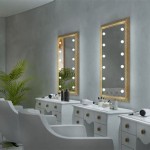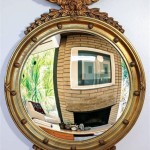Arts and Crafts Mirror Plans: A Guide to Replicating the Style
The Arts and Crafts movement, which flourished in the late 19th and early 20th centuries, emphasized simplicity, functionality, and the use of natural materials. It celebrated craftsmanship and traditional techniques, resulting in furniture, textiles, and decorative objects that were both beautiful and enduring. One iconic piece associated with the movement is the Arts and Crafts mirror, characterized by its distinctive features and timeless appeal.
Creating an Arts and Crafts mirror involves carefully selecting materials, adhering to specific design principles, and employing traditional crafting methods. The result is a piece that embodies the spirit of the movement and adds a touch of elegance and history to any room.
Key Features of Arts and Crafts Mirrors
Arts and Crafts mirrors share certain defining characteristics that set them apart from other styles.
1. Simple and Geometric Frames
Arts and Crafts mirrors typically feature simple, geometric frames made from natural materials. Popular choices include oak, walnut, and mahogany, often left unpainted or stained with a natural finish to showcase the wood's grain. The frames are visually appealing, devoid of excessive ornamentation or elaborate carvings. Instead, they often incorporate clean lines, right angles, and understated details, such as a simple molding or a subtle chamfer.
2. Handcrafted Quality
The craftsmanship of Arts and Crafts mirrors is evident in every detail. The frames are meticulously hand-crafted, showcasing the skill and artistry of the maker. The joints are tight and precise, the surfaces are smooth and polished, and the overall construction is sturdy and durable. The mirror itself may be a simple beveled glass, or it could be framed with a decorative carved or stained wood surround, further emphasizing the handcrafted nature of the piece.
3. Natural Materials and Finishes
Arts and Crafts mirrors prioritize natural materials, reflecting the movement's emphasis on simplicity and authenticity. The frames are primarily made from wood, often treated with natural stains or finishes to enhance the wood's beauty rather than cover it. The use of metal accents, such as hammered copper or wrought iron, may be incorporated for functional elements like hooks or decorative details.
Replicating the Style
Creating an Arts and Crafts mirror requires careful planning and execution.
1. Design Inspiration
Start by researching authentic Arts and Crafts mirrors, examining their design elements, materials, and overall aesthetic. Consider visiting museums or browsing online galleries for inspiration. Identify the key features that appeal to you and incorporate them into your own design.
2. Choosing Materials
Select materials that align with the Arts and Crafts ethos. Opt for solid wood like oak, walnut, or cherry for the frame. Consider a salvaged or reclaimed wood piece for a more environmentally friendly approach. Choose a simple, bevel-edged mirror glass for a classic look.
3. Crafting Techniques
Embrace traditional woodworking techniques like mortise and tenon joints, dovetail joints, or miter cuts. These techniques create strong and durable connections, ensuring the frame's stability and longevity. Hand-sanding the wood to a smooth finish and applying natural stains or oils will enhance and protect the wood's beauty.
Benefits of Creating an Arts and Crafts Mirror
Crafting an Arts and Crafts mirror offers numerous benefits for the maker and the home.
1. Unique and Personalized Piece
Creating your own Arts and Crafts mirror allows you to express your personal style and preferences. You can customize the size, shape, and materials to suit your specific needs and aesthetic. The result is a unique and personalized piece that reflects your creativity and craftsmanship.
2. Decorative and Functional
An Arts and Crafts mirror serves both decorative and functional purposes. Its timeless design adds elegance and sophistication to any room, while its reflective surface creates the illusion of space and light. The mirror can also be used as a focal point in a room or as a complement to existing furniture and décor.
3. Sense of Satisfaction and Accomplishment
The process of creating an Arts and Crafts mirror can be both challenging and rewarding. It requires time, patience, and skill, but the satisfaction of completing a handcrafted piece is immense. The experience fosters a sense of accomplishment and pride in your own abilities.
Arts And Crafts Mirror 3d Warehouse

A Mirror Template Arts Crafts Twinkl Resources

Mirrors Woodworking Plans Mirror Wall Wood Shelves

Antiques Atlas Arts Crafts Planished Copper Wall Mirror As289a1295 18549

Mexican Folk Art Mirror Children S Museum Of Richmond

This Item Is Unavailable Craftsman Furniture Mission Style Wooden Front Door Design

All About Me In Pre School Art Activity

Painting On Mirrors Process Art For Kids Where Imagination Grows

Mirror Wedding Table Plan Seating Chart Full Length Vinyl Decals Stickers Instructions Tools Provided 1h To Apply

Easy Driftwood Mirror The Wood Grain Cottage








